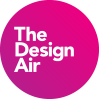Etihad has always been a challenger brand in the Middle East, even if it’s not the youngest of the carriers. Often shadowed by its much larger, blingier cousin Emirates, and self-styled luxury carrier Qatar Airways, Etihad has had a bigger hill to climb, either winning market share, or the hearts and wallets of this lucrative yet highly competitive one-stop global hub for long-haul travel.
When Etihad reimagined itself a few years ago with the Etihad Design Consortium’s award-winning product range on its A380s and 787s, it established itself as a design carrier, putting heavy emphasis on crafting every detail of the passenger experience. This was created as a blueprint for the large global expansion that the airline was undertaking, that was quickly curtailed by increasing competition, and lack of profitability.

The airline’s brand new A350 was designed during this time of uncertainty, and need to stem losses wherever possible. So instead of having to re-certify complex and unique seats for the aircraft type, or create even more costly new seats, the time of the globally acclaimed Residence and all-singing all-dancing First Class and bespoke Business Class had to come to an end.

This meant opting for an off-the-shelf product, which would mean losing its competitive edge, while benefiting from a tried and tested and well-established market product. But how can Etihad stand out from the crowd with a product similar to that found on British Airways, American or even China Airlines?
Design details matter

On entering Etihad’s A350-1000, its clear there is an understated elegance that is both refined and quiet. The aircraft’s premium Business Class product is its crowning glory, with a large sea of 44 Super Diamond Business Class seats, perfectly framed by the suite walls that feature doors for every guest.

The cabin feels spacious thanks to the removal of the central overhead bins, and while at first, everything feels more monochromatic in comparison to the 787 I travelled on on the way here, there is one consistent theme that runs throughout. Every single surface, detail, design element has been considered and thought through. The bulkhead feature the same diamond pattern that grace the livery, the Etihad logos take pride of place on both walls, so whichever door you enter the cabin from, you are greeted by the airline brand.

These broad strokes are supported by finer details within the suites themselves. Suite walls feature textured finishes akin to what Cathay Pacific have, and the main furniture is trimmed with a brushed gold, inlayed with dark chocolate wood and white marble finishes.

There’s a clear shift from the sand-like tones used in the previous incarnation of the product, opting for lighter and darker contrasts in the materials used, which breathes fresh new life into the brand.

The Business Class cabin isn’t as intimate as the 787s, but sits smaller than the A380s. There’s no social space to speak of, and the aisles don’t lend themselves to heavy traffic being fairly narrow, so guests are encouraged to make use of the swathes of space these Super Diamond seats provide.

Much of the soft and catering product remains the same, with the hotelier-style approach to service with at-seat pours and course by course delivery. The crew are one of Etihad’s best assets and it should continue to value their importance in creating a holistic passenger experience. Some of my best flights have been on Etihad and I can still remember the crews by name, and that’s testament to allowing crews to have personality and letting it shine through.

Lighting plays a big factor too. Etihad’s signature lighting design is inspired by the shadows cast by Abu Dhabi’s palm trees. The cabin lighting emulates the natural ambient light and is designed to enhance the guest experience, provide an optimum environment for sleeping and reduce the effects of jetlag. The Airbus A350 also offers the quietest cabin experience for a wide-body aircraft.

Another feature to help reduce light pollution, and therefore jetlag, is the new dark-mode interface on the E-BOX inflight entertainment system. Mobile and Wi-Fi connectivity is also available throughout the aircraft.
As we’ve already highlighted before, Etihad’s ‘Little VIP’ younger guests will enjoy the newly launched Warner Bros. World Abu Dhabi themed family-friendly flying experience and a special feature on this aircraft is the new interactive flight map feature which means children can explore the maps with the help of some Jurassic-age friends.

In economy, there are no less than 327 smart seats in a 3-3-3 arrangement, of which 45 ‘Economy Space’ seats have been enhanced with an additional 4 inches of legroom at 35”.

The Crystal Cabin Award-winning seats were selected after extensive customer trials by Etihad and based on their comfort and sustainability credentials. The seats feature Etihad’s signature supportive headrest, USB charging and Bluetooth headphone pairing, as well as a 13.3” inch screen to enjoy Etihad’s award-winning inflight entertainment system.

Guests receive blankets and pillows for additional comfort and amenity kits on longer flights, as well as enjoying complimentary dining and beverages served by Etihad’s award-winning cabin crew.
Overall, Etihad have delivered a new product that while not ground breaking – reflects its new position as a grand boutique carrier for the region, focussing on a commercially viable business model while putting the needs of its most valuable guests, first.


Stunning